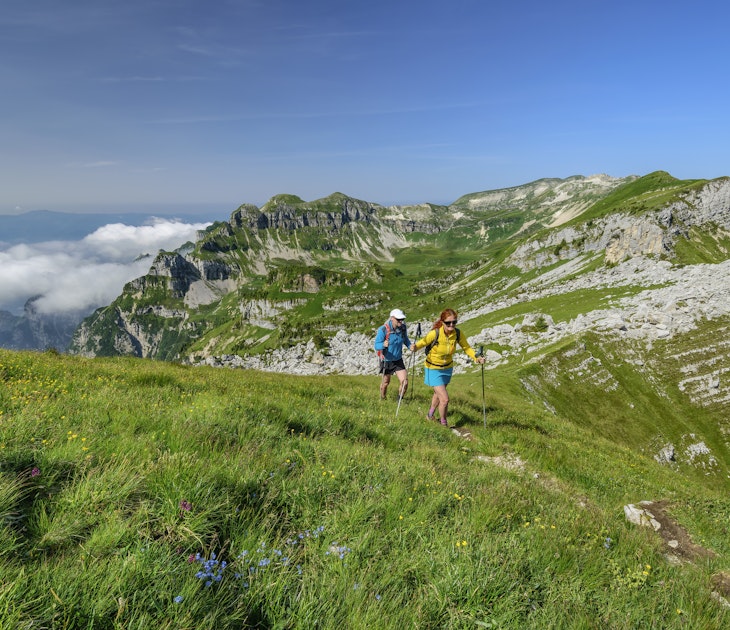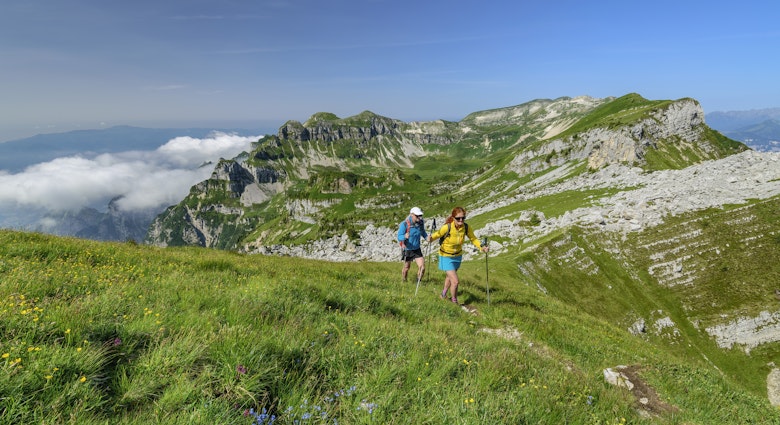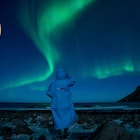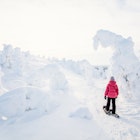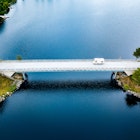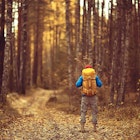Much of Finland snuggles under a blanket of dense, wild forest, providing habitats for diverse and magnificent species. The upshot is that the wildlife here is way up there with Europe’s best: you can spot bears, wolves, and wolverine from remote hides, immerse yourself in Sámi reindeer herding life or go husky sledding in the Arctic. And the good news is it’s all as ethical as can be, as the Finns are remarkably in tune with nature. These experiences are our picks of the pack.
Brown bear watching
As spring melts into summer, the space and remote solitude of the country’s old-growth boreal forests and swamps beckon. Here you can spend the night in the grumbly company of brown bears at the conservation-focused Wild Brown Bear Centre. This nature reserve is out on its lonesome in Lentiira, where eastern Finland slips unobserved into the wilds of Russia.
The forests here are so unnervingly silent that you are aware of your own heartbeat, every rustle in the ferny undergrowth, and, perhaps, eyes hungrily watching you. But don’t worry: the brown bears here are not as aggressive as their grizzly North American cousins. All the same, you’ll literally draw breath when a bear lollops up to your hide, getting close enough for you to hear its raspy snuffles. Seeing one lift itself onto its hind legs is pure magic.
Spring brings bouncy cubs into the equation – and seeing them play in the cottongrass-stippled swamps is like a scene from a bedtime story. If you’re lucky, you’ll spot one of Finland’s other "big five", namely wolverine, wolves, lynx, and elk. Go with a group and guide in one of the communal hides. Or if you’re a photographer, come during the white nights of midsummer for thrillingly up-close encounters in a solo hide. The luxury lodges are the dream for families, with plenty of space for bear watching in privacy.
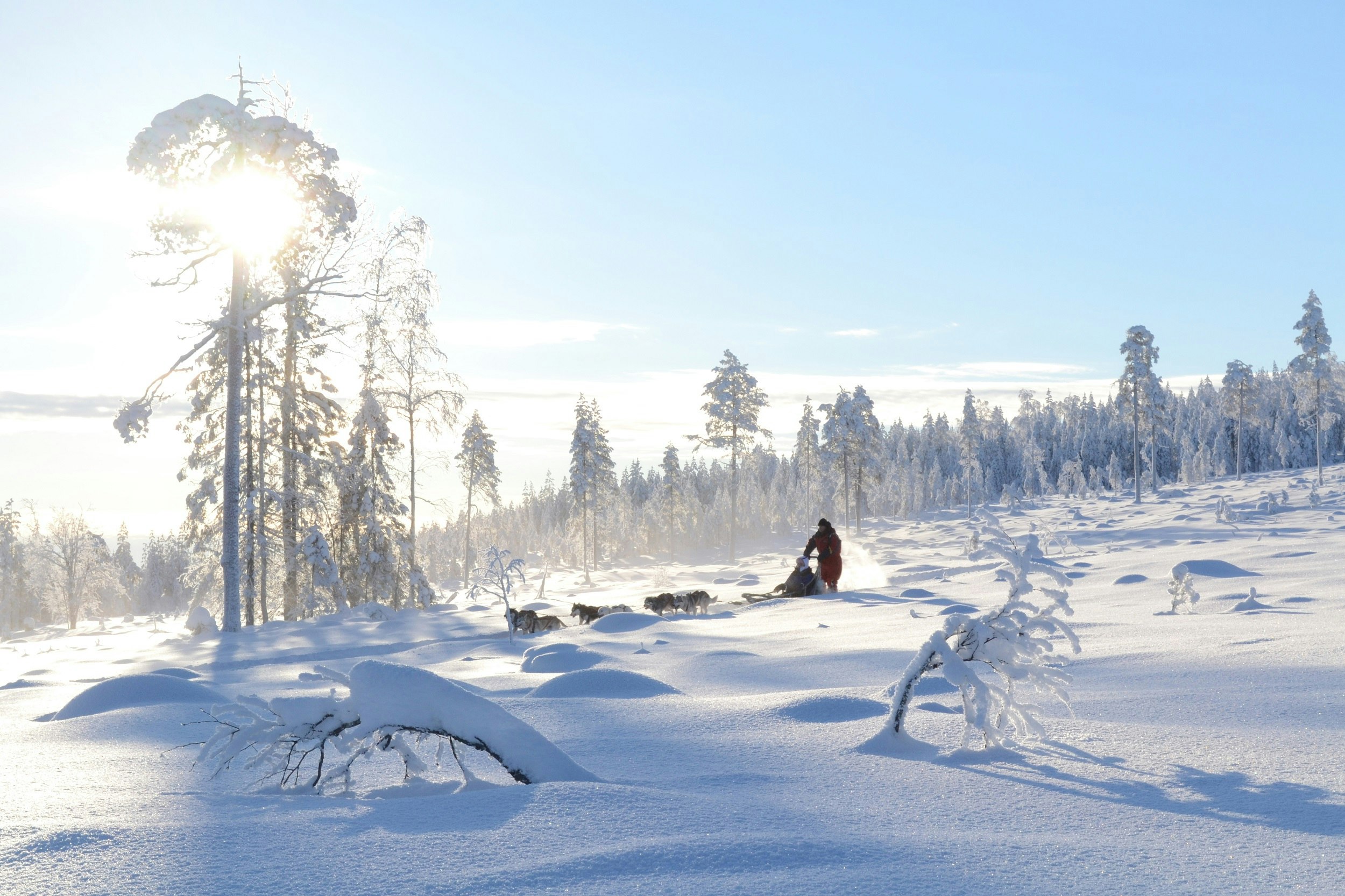
Husky sledding
Dog sledding has been a way of life in Finland for centuries. These days, it’s no longer just a way to zip from A to B, but an industry supported almost entirely by visitors keen on getting whisked away on sled rides. Finland has some of the world’s toughest animal welfare legislation, and husky farms are visited and assessed annually by authorities. While husky dogs do enjoy the structure and training of mushing, it’s important to also get a feel for the dogs’ quality of life during downtime.
Bear Hill Husky is a family-owned-and-operated husky kennel in Rovaniemi, in Finnish Lapland, offering dog-sledding rides, but they choose to take the focus off them. Instead, visitors take a short ride through the lush surrounding forest and spend the rest of their time getting to know the real life of a sled dog: going for forest walks with the dogs, playing with pups and retired pooches, and observing training methods and techniques. Every dog has a name and a story, and the staff happily share all. The kennel also operates with a “no hidden corners” policy, meaning all areas – as well as the dogs and how they’re treated – are openly visible at all times.
Wolf watching
Prowling through the deep, dark forests of eastern Finland, the shy, highly elusive wolf is one of the country’s greatest predators. Seeing one in the wild is an experience you will be raving about forevermore. Nudging the Russian border, Lentiira is one of the finest places to do precisely that and the odds are excellent from the hides at Wildlife Safaris Finland from June to September. Come in summer for the best light and photos.
All is forest and water in this lonely region, where wolves roam at will. There are never any guarantees, but multi-day stays here ramp up your chances of spotting wolves tenfold.
Wolves have been creeping across the border from Russia since the early 2000s and they can be sighted four to five nights a week during the season. The photography hikes and wildlife-watching stays place a massive emphasis on conservation and have helped to reduce poaching.
Choose a private hide for the best photo ops and to witness wolves at heart-pumpingly close quarters. Besides wolves, you can hope to see brown bears, wolverine, reindeer, moose, and – if you’re extremely lucky – Siberian flying squirrels. Birders are also in their element, as golden and white-tailed eagles, woodpeckers, pied flycatchers, sandpipers, willow warblers, and kestrels are regularly sighted. There’s no need to lug all your gear, either: you can rent sleeping bags, binoculars, and cameras on site.
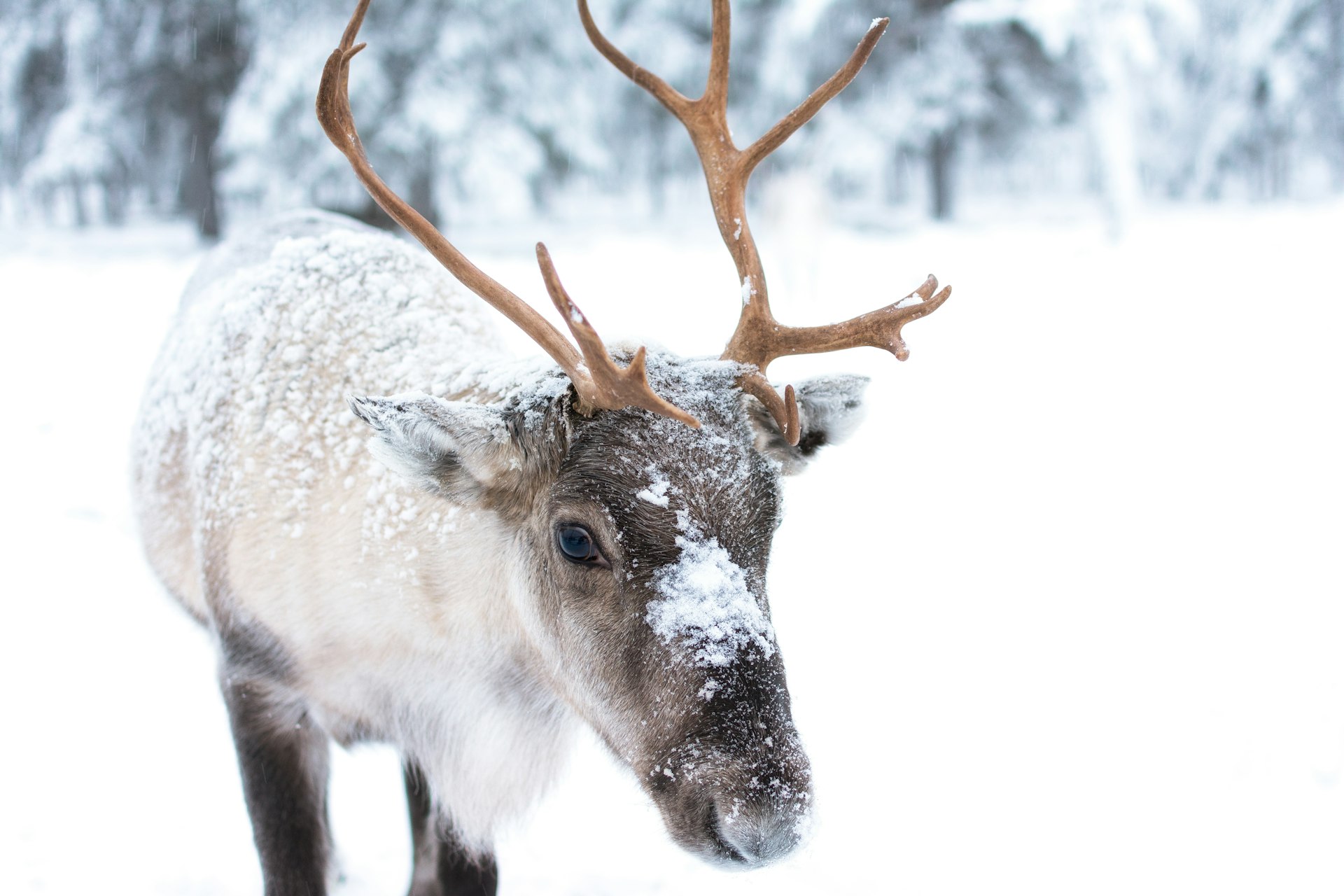
Reindeer herding
Reindeer herding has been the lifeblood of Lapland’s indigenous Sámi for centuries. The reindeer were once crucial to the survival of these nomadic people, providing food, clothing, trade, and transport in a remote, harsh environment. The relationship born from this kinship is an extraordinary one reflected in nuance: the Sámi have around 1000 words to describe every aspect of the reindeer, from its behavior to appearance, movement, and personality.
Times have changed, but reindeer herders like the Orbas family still exist. The family, who live about 70km (43 miles) from Rovaniemi, have been herding reindeer for decades. Some things are still the same as years before – for example, the family does its best to live off the land without electricity. But a modern-day approach involves snowmobiling to reach the reindeer to feed them. Visit and you can help build fencing for the reindeer, join them on forest walks and eat meals of reindeer soup and sausage, with long conversations with the family revealing the fascinatingly complex, cyclical relationship between the animals and their handlers.
In Salla, about a two hours' drive east of Rovaniemi, a collective of Sámi families preserve one of the world’s last wild reindeer populations at the Salla Reindeer Park. Here you can strike out on a self-guided hike around the fenced-in forest and marshland, spotting the reindeer going about their business. Excursions with reindeer herders also include sleigh rides and feeding the animals amidst impeccable northern nature.
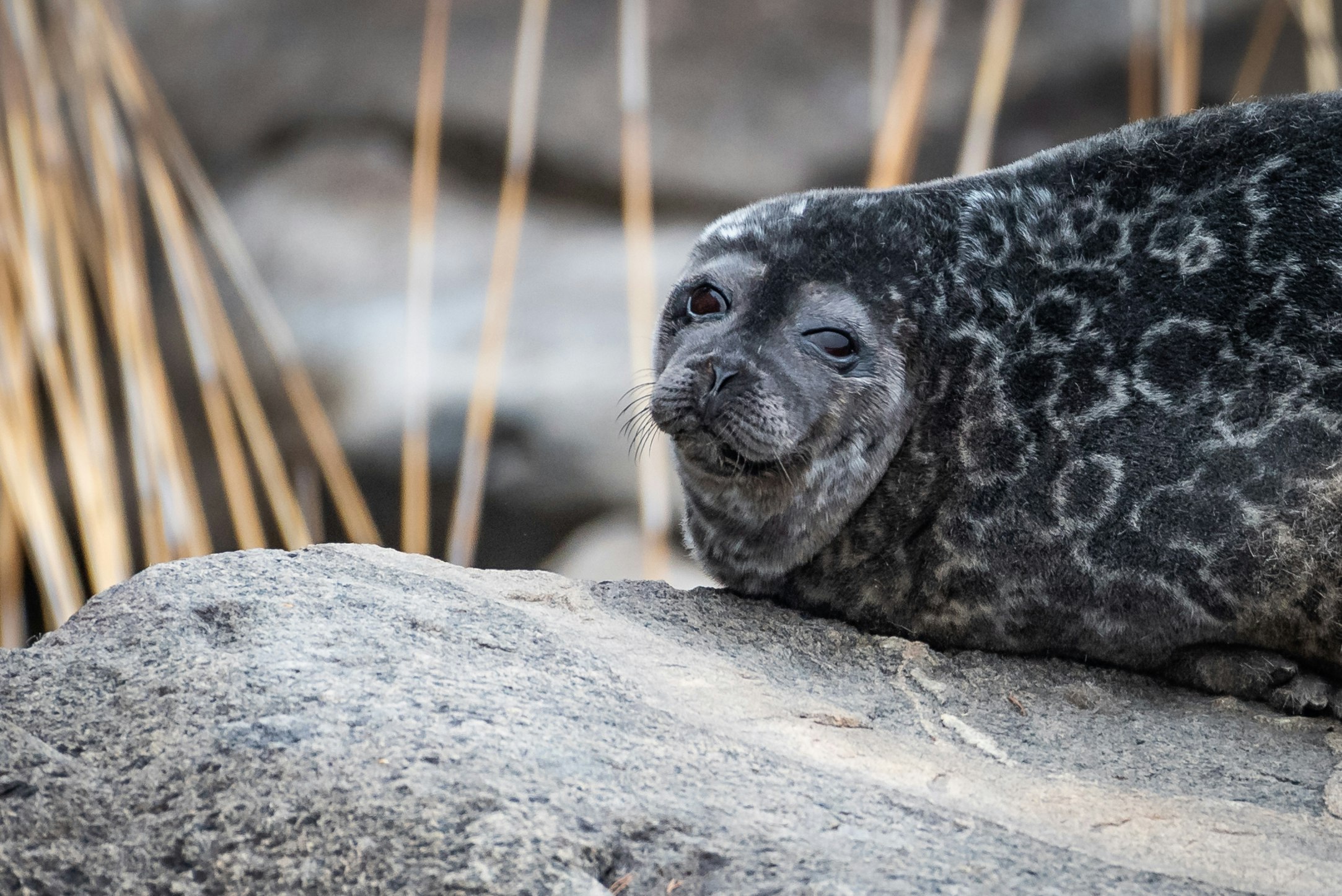
Spotting Saimaa ringed seals
The Saimaa ringed seal is a beautiful creature native to Lake Saimaa in southeastern Finland. The distinctive rings on their coats (which look a little like the salt stains we humans sometimes get on our clothes from sweat) developed when the animals became separated from other seals during the Ice Age.
They are one of the world’s most endangered seal species due to human activity. The population has reached just over 400 animals because of conservation measures, but sightings are rare. If you’re lucky, you may be able to see a seal on a wildlife-watching excursion, but it’s extremely important to follow your guide’s instructions and act responsibly so as to not harm the population growth.
During molting season, from around May to June, the seals bask out on the rocks to catch the sun. Later in the summer it gets more difficult as they only pop out of the water every 10 minutes and never come to land. Seeing pups is very rare.
From Puumala, you can hop on an eco-friendly seal-watching boat that focuses on sightings of a local population of about 20 seals. Guided cruises are also offered in Linnansaari National Park. Before choosing an excursion, don’t be afraid to ask lots of questions about the tour operator’s philosophy on sightings and protecting the animals. Reputable companies ensure watching excursions always take place from a distance, so a good pair of binoculars is handy.
Sighting Arctic animals
The Arctic is home to an incredible line-up of wildlife, but much of it is incredibly elusive because of the vast scale, bitter cold, and stark terrain. For a glimpse of the animals you often only get to see in documentaries, head to Ranua Wildlife Park, 80km (50 miles) south of Rovaniemi. Just south of the Arctic Circle, this Lapland animal sanctuary slots naturally into the forest, with plenty of space devoted to preserving endangered Arctic species like polar bears, mink, wolverines, and otters. It also takes care of other species including bears, Arctic foxes, boreal owls, moose, musk oxen, and reindeer.
The park is affiliated with bodies such as the European Endangered Species Programme (EEP) and European Studbook (ESB), and also runs an animal clinic where all lost and hurt wild animals can be brought in and cared for. Those that reach good health again are released back into the wild, while others remain in the park.
There are no lights after dark to respect the animals' natural habitats, so if you arrive at night (which, in winter, accounts for most of the day), you’ll need to bring a torch or headlamp or rent one from the park.
Guides can be hired for an additional price, and it’s well worth it for extra information on the animals and special experiences like feeding arctic foxes and other animals.
Observing wolverine
The forested expanses of Eastern Finland are a wildlife feast, but it’s a rare treat to clap eyes on a wolverine, which is now endangered in Finland. Belonging to the same family as weasels and badgers, these shy yet inquisitive creatures are lone rangers, skilled climbers, and tireless wanderers. They are fighters too, often taking on animals much bigger than themselves, including wolves, reindeer, elk - and even bears.
Responsibly-minded Taiga Spirit in Kuhmo takes you properly into the wooded wilds on wolverine photo safaris, which run from March to October. In spring you can see them slink across the snow, while in fall you might see them emerge from forests burnished gold and russet. Besides wolverine, you’ll perhaps delight in seeing elk, caribou, brown bears, and capercaillie too.
Birding in Liminganlahti
While Finland is ripe with birding potential, but top billing goes to Liminka Bay, southwest of Oulu, which peers out across the Gulf of Bothnia to Sweden. One of Europe’s most important wetlands, the pine- and reed-fringed bay attracts waterfowl, rare waders, and birds of prey. Tens of thousands of birds flock here to nest, rest and feed. Among them are the rare black-tailed godwit, Ural owl, yellow-breasted bunting, bittern, marsh harrier, and tern. Witnessing the spring dance of the ruffs, the flight of geese at sundown, and the fall migration of common cranes are moments of seasonal wonder.
Boardwalks lead to a number of birdwatching towers around the bay, where silence, patience, and a decent pair of binoculars yield the best results. For more insight into the birds and their habitat and excellent photo opportunities, consider joining one of Finnature’s one-day guided hikes instead.
You might also like:
How to make Finnish baked juustoleipä with cloudberries
Autumn in Finland: an alternative fall foliage tour
Where to see the Northern Lights on a budget


